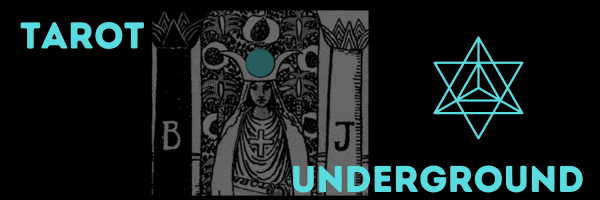
You mostly know what the cards mean.
You’ve got some Tarot card spreads on hand.
You keep a Tarot journal and do a daily draw.
But when it comes to the questions you are dying to answer, your reading fails.
Why, after all this time, can you not “do” a Tarot reading????
Key 1:How to Do a Tarot Reading – Tracking Skills????️
Learning Tarot is like tracking an animal in the wilderness.
Once you learn which tracks belong to which animal, aka card meanings, then you have to learn how to follow those tracks to the animal.
Sometimes the trail goes cold.
Sometimes other tracks cross over the tracks you are following and you’re not sure where the animal went from there.
Sometimes the tracks lead to the edge of a river. Now what?

This is where the art of divination comes in. Key 1 is the realization that reading Tarot is more than just card definitions and spreads.
You need to hone your tracking skills, which are not always straightforward. Nor are they the same approach every time.
Key 2: You Need an Approach to Do a Tarot Reading ????️
In order to make sense of a Tarot reading, you need an approach or model.
This model or approach should give you some ways to look at the question at hand and the spread as a whole.
It should answer the questions of what are you looking for and what are you looking at.
Here’s an excerpt from Tarot in the Moment, my comprehensive book on how to read Tarot. The Stereogram is 1 of 3 approaches discussed in the book.
The Stereogram Approach to Reading Tarot
Remember those books with 3-D images? The pictures that look like a bunch of pixels until you hold the book a certain distance and angle it a certain way?
That’s called a stereogram.
Performing a Tarot reading is a bit like a stereogram.
Just as it’s difficult for anyone to tell you how to “see” image in the stereogram, it’s difficult for me to tell you how to “see” something in a reading.
That said, the following are some tips to guide you.
- Which card or which part of a card immediately catches your eye?
- Look for repeating shapes, symbols, colors or items. See if they make a path or morph into something else. All you need to do at this point is observe, not interpret.
- Is there any obvious flow or development within the cards?
- Do the wands or any other suit or symbol seem to increase?
- Do the Court Cards seem to be gathered together and creating something?
- Zoom out on the reading periodically and see if you catch anything. It could be simple, like a lot of cup cards. Or it might be more subtle, like the way the person on one card is looking toward another card.
The stereogram part of the reading is not structured. It relies more on your intuition and right side of the brain. These are the insights that just “come to you” or that you “just know.”
You can backtrack and say, “oh, it was because of this, that, and the other,” but it often doesn’t really make logical sense.
For me, these types of insights often come through as a feeling. I hook into an overall feeling of the situation surrounding the cards. It may be one person’s feelings or a general vibe.
Once I hook into the feeling, the cards fall into context.
This is the problem a lot of beginning Tarot readers have. The cards themselves could represent a broad spectrum of people, situations, and emotions. So how do you know who is who and what is what?
As always, your intuition will help guide you.
When you first open a reading, it’s like opening a book for the first time. If you want to get a feel for the book, you look at the cover, read the title, read the back, and look over the table of contents.
This is how we will open the reading, using the questions outlined above.
Notice that with the stereogram approach, we are just noticing, not interpreting.
When you do a lot of observation, noticing, and verbalizing what you see, the picture in the stereogram starts to appear!
One more analogy before we wrap up this section. Tapping into your intuition when reading the cards is like making pictures in the clouds. Maybe only you can see the seahorse. Look away, look back and now the seahorse is a raindrop. Now look at a different part of the sky. What’s happening there?
Worksheet to Help You Do a Tarot Reading
Key 3: What Great Tarot Readers Know ????️
Great Tarot readers know it’s not all about them.
There are 3 participants in any Tarot reading: you, the person you are reading for, and the cards.
If you spend all day reading and talking to yourself, you are leaving out a vital component of being able to do a Tarot reading.
That vital component is other people.
Have you ever had a problem, and once you said it out loud to someone else, the solution became clear?
In order to become a talented Tarot reader, you need to get out of your own head and read for other people.
Yes it’s nerve wracking and scary.
But you can do it. I believe in you!
When you get serious about reading for other people (and that doesn’t mean you have to charge money), you learn how to read other people by interacting with them and the cards at the same time.
That sounds overwhelming and confusing, but you’ve participated in a conversation with 2 other people haven’t you?
By only reading for yourself, you are keeping your reading skills in a sealed container where they will never sprout and grow.
By reading for another person, you get immediate feedback on where you hit and and where you missed. It only gets better from there.
I have a lot more guidance for you on how to get a conversation going with the cards in Tarot in the Moment.
